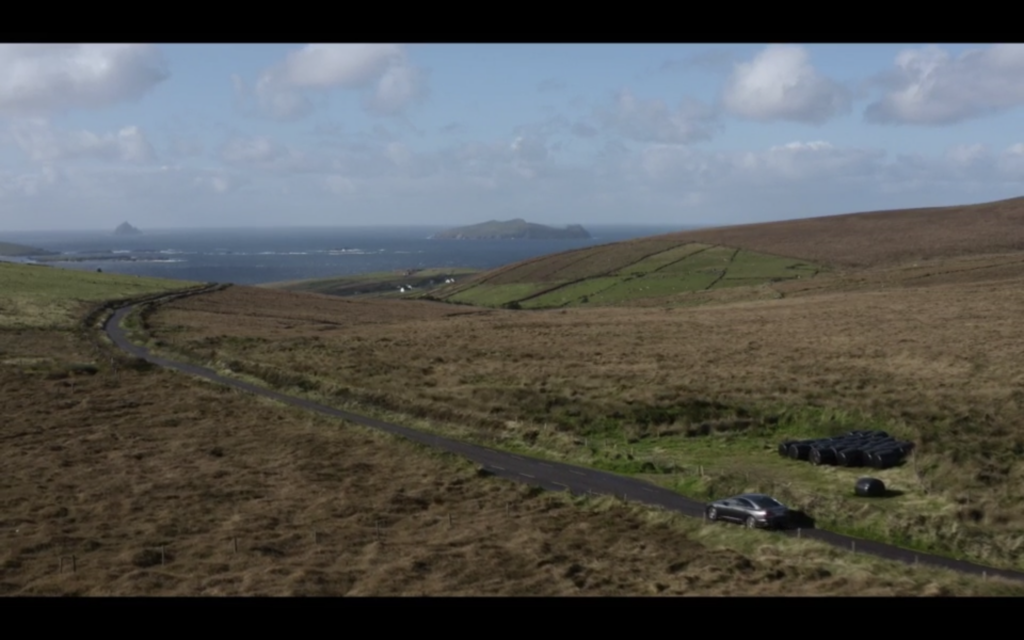Tarrac - Mám Clasach
Mám Clasach
|
Maumclasac
Address
An Gleann Mór, Dún Chaoin, Corca Dhuibhne
52.139662
, -10.430870

An Clasach, Bóthar an Chlasaigh, Mám Clasach, all are names for this road which passes from the renowned Páidí Ó Sé’s pub in Ard a Bhóthair to the heart of Dún Chaoin, with commanding views of the Blasket Islands and surrounding coastline. The brief scene filmed here takes advantage of this, and links it visually to other feature films made in the area, including Ryan’s Daughter (1970) and Far and Away (1992). Along the roadside is also found a stone with a large split in its centre, known as Carraig an Ghiorria, or The Rock of the Hare. The name derives from a Fenian legend regarding the two famous dogs of folk hero Fionn Mac Cumhaill.
Tarrac re-centers women’s bodies in the context of a sport and cultural tradition previously largely imaged – and thus only ever really imagined – as populated by male bodies: the western Irish tradition of naomhóg-racing. Tarrac seeks not just to amplify women’s voices (importantly: as Gaeilge, or speaking through Irish) within the same arena in which Irish society and Irish Cinema (including Irish Language Cinema, vis-a-vis An Cailín Ciúin) has historically positioned them – the domestic – but to broadcast them across social, public, and sporting spaces as well.
Tarrac tells the story of Aoife (Kelly Gough) returning to her West Kerry home to take care of her widowed father, nicknamed Bear (Lorcan Cranitch), who has recently suffered a heart attack. While both of them are forced to confront the emotional fall-out of Aoife’s mother’s passing years ago, as well as Bear’s consequent / stereotypical inability as an Irish man to supplement the emotional labour traditionally ascribed to mothers, Aoife falls in with a local women’s rowing crew. Physical exertion obfuscates emotional turmoil and emptiness…to a point. Aoife ultimately commands her team to improbable success in the all-Ireland final, and in so doing, resurrects the spirit of her dead mother (famed for her own skill in rowing) and forces Bear to acknowledge his parental shortcomings.
The bones of the story may be bare, but the landscape and the milieu – the inner and social lives of women in 21st century rural Ireland – flesh Tarrac out into something vital and new.
The interview below is with local artist Áine Ní Chíobháin, who worked as location manager for the production.

